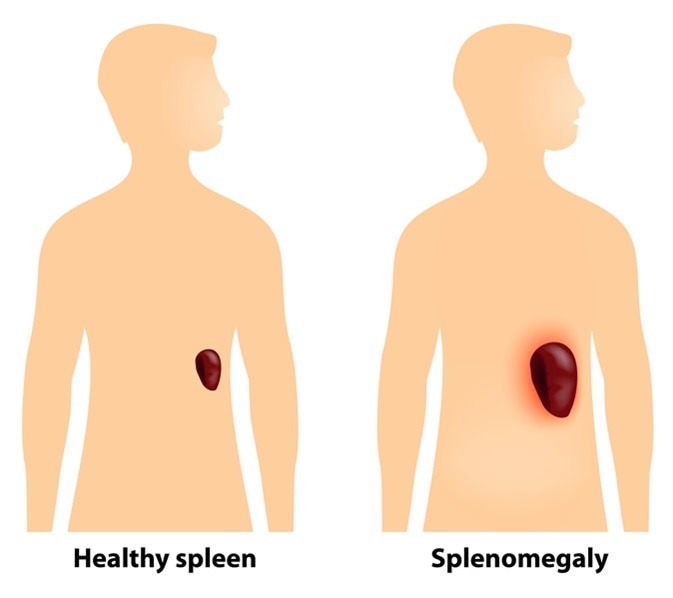The spleen is an intra-abdominal organ located just below the left side of the ribcage, behind the stomach. It is involved in removing abnormal or worn-out red cells from the blood, and also contributes to the immune function of the body, by providing antibodies and lymphocytes.
Enlargement of the spleen is called splenomegaly and can occur as a result of many infections, tumors, and hereditary or acquired conditions of the blood leading to hemolysis. The enlarged spleen may also become overactive, devouring too many blood cells and producing other symptoms.
The normal spleen weighs approximately 200g and is usually impalpable; in disease states it may enlarge to become about 2 kg at most.

Causes of Splenomegaly
The spleen may be enlarged in a range of conditions:
- Liver disorders such as cirrhosis, portal hypertension and portal or splenic vein thrombosis or compression, which leads to increase in the blood pressure inside the splenic vasculature
- Cystic fibrosis
- Viral infections such as cytomegalovirus and glandular fever
- Haemolytic anemias: this term includes the hereditary hemoglobinopathies such as thalassemia major and sickle cell anemia; the red cell fragility disorders, such as hereditary spherocytosis; and the red cell enzyme defects including glucose-6-phosphate dehydrogenase abnormalities
- Myeloproliferative disorders such as chronic myelogenous and chronic lymphatic leukemias
- Lymphoproliferative disorders such as the hairy cell lymphomas
- Chronic infections such as malaria, syphilis, kala-azar
- Acute infections such as bacterial endocarditis
Symptoms
While splenomegaly may be symptomless, it can also produce pain in the left hypochondrium, hiccups, feeling of fullness and loss of appetite, and early satiety after eating very little. Symptoms due to cytopenia may be present in cases of hypersplenism.
Diagnosis and Treatment
Splenomegaly is a condition which usually produces minimal symptoms, but it may be palpated when enlarged, as its lower border descends lower than the inferior edge of the ribcage in this situation. In such a case, further tests may be needed, such as imaging with ultrasound or CT scanning, and tests of peripheral blood to identify the kind and numbers of each type of cell which may give a clue to the etiology.
Treatment for splenomegaly is always specific to the underlying condition. In some cases the spleen may have to be removed, but this is rare. In cases due to malignancy, chemotherapy or radiotherapy may be required. Blood transfusions may be necessary in patients with hemolytic anemia.
References
- https://www.betterhealth.vic.gov.au/health/conditionsandtreatments/splenomegaly
- http://www.mayoclinic.org/diseases-conditions/enlarged-spleen/home/ovc-20212739
- http://www.merckmanuals.com/professional/hematology-and-oncology/spleen-disorders/splenomegaly
- https://medlineplus.gov/ency/article/003276.htm
- http://www.nhs.uk/conditions/spleen-disorders-splenectomy/Pages/Introduction.aspx
Further Reading
- All Spleen Content
- Living Without a Spleen
- Splenectomy (Spleen Removal)
- Causes of Spleen Pain
- How is an Enlarged Spleen Diagnosed?
Last Updated: Feb 27, 2019

Written by
Dr. Liji Thomas
Dr. Liji Thomas is an OB-GYN, who graduated from the Government Medical College, University of Calicut, Kerala, in 2001. Liji practiced as a full-time consultant in obstetrics/gynecology in a private hospital for a few years following her graduation. She has counseled hundreds of patients facing issues from pregnancy-related problems and infertility, and has been in charge of over 2,000 deliveries, striving always to achieve a normal delivery rather than operative.
Source: Read Full Article
